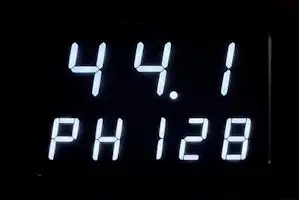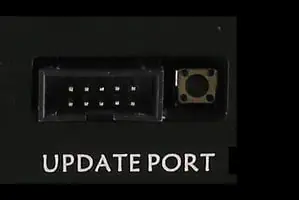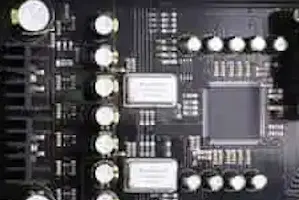MAGNA HIFI R2R (SILVER) UPGRADE
Magna Hifi, have been working for months on possible improvements for Audio-GD R2R DACs. Because we have gained a lot of experience with the Mano ULTRA streamer and other successful modifications in the digital area. We had certain ideas about how things could be improved and sound better.
AND IT DOES! Read more…
TECHNICAL SPECIFICATIONS
| SPECIFICATIONS |
|---|
| Product type | R2R DAC |
| Inputs | 1x USB (Amanero)
1x HDMI (I2S signalling only)
1x XLR (AES/EBU)
1x BNC (S/PDIF or 10MHz Master Clock input)
1x RCA (S/PDIF)
1x Toslink (S/PDIF) |
| Outputs | 1x XLR (Balanced)
1x RCA (Single-ended)
1x ACSS (Krell Cast compatible) |
| SNR | > 120dB |
| Output impedance | < 5Ω (XLR, RCA) |
| Output level | RCA : 2.5V
XLR : 5V
ACSS : 2+2mA |
| Frequency response | 20Hz – 20kHz |
| THD | < 0.1% |
| Input sensitivity | Coaxial : 0.5Vp-p (75Ω)
Optical: 19dBm
USB / HDMI : 3.3V |
| Compatible OS | Windows, OSX, Linux, ISO |
| Supported sampling rates | USB, HDMI : PCM up to 32bit 384kHz, DSD up to DSD512
Coaxial : PCM up to 24bit 192kHz
Optical : PCM up to 24bit 96kHz |
| GENERAL |
|---|
| Supply voltage | 220-240VAC 50/60Hz |
| Consumption | 40W |
| Weight | 15kg |
| Dimensions | 430 x 445 x 80mm |
| Package | 1x Audio-GD R-8 MK2
1x Power cable
1x USB Cable
1x USB Blaster (firmware update)
1x Remote Control |
NOS & OVERSAMPLING MODE
The R8 offers several Oversampling or NOS (Non-Oversampling) modes. If you wish to choose Oversampling, simply select the value “O”. If you want to choose the NOS then you have to choose the value “N”. You can then select one of the following modes to adapt the playback to your listening experience
THE R-2R LADDER STORY
The R-2R DAC has become popular and was originally designed long time ago by MSB, and did not include the wonderful correction design of the modern MSB technology. In the High-End of the shelf (finished products) market, the R2R design is usually much more complex when outstanding performance is offered. Some manufacturers are using shift registers design to realize ladder compensation. A less complex, unfortunately also a less performing.
A far better design switches resistors in parallel mode; an ultra-fast FPGA chip controls and corrects the R2R ladder. The parallel design mode controls every bit respectively and therefore achieve unprecedented performance. (In parallel mode only 1 clock cycle is needed to output all data; serial design mode needs at minimum 8 up to 24 clock cycles) The parallel design is particularly complex, however when it is done properly it can correct every bit of the ladder. (Photo below shows a FPGA design with R2R ladder). With incredible speed and accuracy the R-28 will correct the unavoidable imperfections of the basic R2R ladder caused by tolerance of resistors; avoid glitches at ultra-high speed to deliver unrivaled musical performance.
TOLERANCE OF RESISTORS IN LADDER
Some manufactures claim to achieve good performance becuase they use lowest tolerance ladder resistors. The following calculation example will cover this. At 16 bit the tolerance of 1/66536, 0.1% (1/1000) it is by far not enough to achieve decent performance. Even using resistors with 0.01% (1/10000) tolerance, lowest tolerance available today,cannot deliver the desired performance This is just 16 bit, imagine a 24 calculation! To process 24 bit resolution it would require resistors with a tolerance of 0.00001%. This is purely theoretical; if this tolerance would exist the discreteness of the switch logic chips will already have too much internal impedance and will shake-up such design.The tolerance of the resistor will never solve Imperfections of a ladder.
The solution lies in the correction the ladder and not only depend on the tolerance of resistors. It’s a combination of both: Ultra-low tolerance resistors controlled by a correction technology using very high speed with parallel FPGA processing.
ULTRA FAST SIGNAL PROCESSING
FPGA stands for Programmable Array Logic. Nowadays the FPGA is widely adopted in audio devices. The internal hardware design is fully controlled by complex software. A huge advantage is the fact the software in the FPGA can easily be upgraded offering new capabilities or improve the performance of the device without replacing any hardware. Versatile and future proof design.
- High performance SPDIF interface, replacing traditional less good performing SPDIF interface chips like DIR9001, WM8805 or AK411X,etc.
- Full re-clocking process with FIFO design applicable on all inputs. This way the output data keeps fully synchronized with the clock signal to reject any jitter.
- Built in 2X, 4X and 8X oversampling and digital filters and on top of this 4 different true NOS (only analog 6dB filtering) modes. To completely configure the sound according to your taste.
ANALOGUE OUTPUT STAGES
The analog output stages are as important, they have a tremendous influence on the final sound quality. After d/a conversion by the R2R D/A modules the analogue signal is transported by fully discrete matched-transistor output stages; DC-coupled design with first class through-hole components. No SMD compon ents are applied in the analogue section. The high speed unique ACSS ((Audio-gd Current Signal System) output stages are non-feedback and current driven. Unique performance because almost all other designs need to convert the signal multiple times from and to current and/or voltage, resulting in less detailed and less transparent sound-stage The output buffers are single ended FET; two stages in parallel to reach very low output impedance. All output stages are in pure class A without (negative) feedback to achieve purest and a real live sound reproduction. The 4 OPA op-amp’s are DC servos, this way no coupling-capacitors are needed and DC output is automatically biased. The listener will be presented a strikingly transparent and neutral sound.
ACSS – Current Amplification
Audio-GD has developed an advanced current-driven amplifier technique. Also known as ACSS, Audio-GD Current System Signal. This special technique ensures that the signal travels a much shorter path and that ensures a more transparent, faster and more neutral reproduction. A similar technique is used by, for example, KRELL. The Current Conveyor technology mostly components are the current mirror. The Current Conveyor technology isn’t a new technology, at 1966 , professor K.C. Smith and A.S.Sedra publish the concept “current mode analogue circuits “ .
?unique=bcad5fe)
?unique=618d376)
?unique=618d376)
?unique=618d376)
?unique=618d376)
?unique=618d376)
?unique=618d376)
?unique=618d376)
?unique=bcad5fe)
?unique=618d376)
?unique=618d376)
?unique=618d376)
?unique=618d376)
?unique=618d376)
?unique=618d376)
?unique=618d376)



